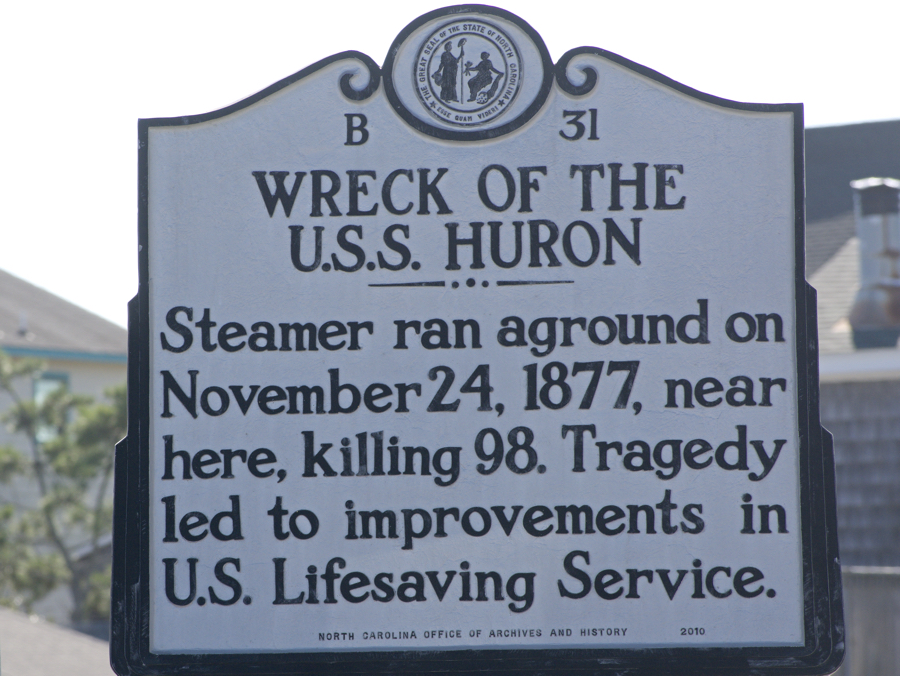The Outer Banks has a fascinating history. On a wonderful summer day, when the sun sea and sand are calling, it may be hard to realize how complex and important the stories are, but the reminders are everywhere.
Highway markers line the roads, reminding drivers or the curious of events that have shaped our history.
One of the most significant, perhaps, is USS Huron sign at the Bladen Street beach access.
Launched in 1875, the Huron was the last of a dying breed of warships. An iron-hulled steamer, she was fitted with three masts, just in case her engine failed. She was also one of the last iron-hulled ships built as the Navy used steel in all their ships after the Huron.
In November 23, 1877 the Huron left Norfolk bound for Cuban mapping expedition. The ship never made it past Nags Head.
On the 24th, a nor’easter took hold along the coast. There was no reason to think the ship was in danger, and in fact, all reports indicate she was riding out the storm with no problem.
Then at 1:30 a.m. tragedy as she ran aground on a sandbar just 250 yards from Nags Head. The Huron should never have been that close to land, and there is still debate about what happened. It is possible that Commander Ryan, the ship’s captain, made an error in navigation. A more likely explanation is the ship’s compass was thrown out of true by the iron hull of the vessel.
Regardless of the explanation, what followed was a tragedy of horrific proportions.
Knowing there was a Nags Head Lifesaving Station, the Huron began setting off disaster flares and signaling for help. But no help came. Because the Lifesaving Service was inadequately funded, Outer Banks Lifesaving Service stations were open seasonally, and the Nags Head Station had closed for the season on October 31.
Local residents tried to help rescue crewmen who were trapped on the Huron as it was being battered by 12’-15’ waves. But without the equipment in the Lifesaving Station, there was little they could actually do.
Crewmen from the Huron who had managed to swim ashore, led locals to the station and broke into it…but it was too little too late. Of the 134 men aboard, 98 perished that night.
The sinking of the Huron and soon after that the Metropolis off Corolla, forced Congress to act and fully fund the Lifesaving Service. The Lifesaving Service is the predecessor to the US Coast Guard.
The history of the Outer Banks is in many ways the history of our nation. Take some time to explore the fascinating history of the area while staying in a Brindley Beach Vacations home.

